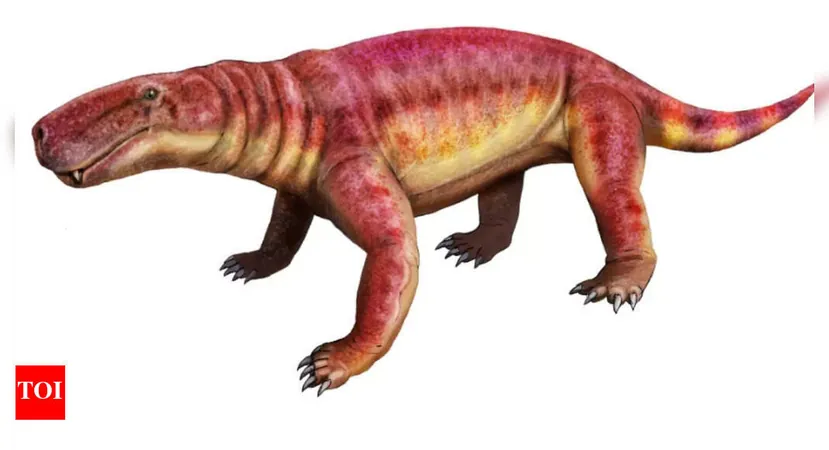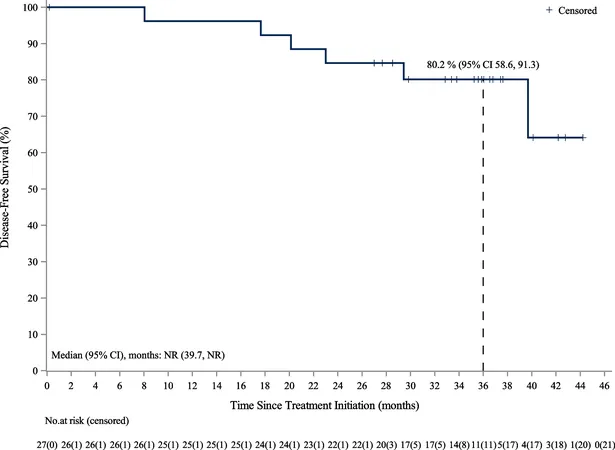
Unveiling the Ancient Apex Predator: Inostrancevia, Ruler of the Earth 10 Million Years Before Dinosaurs!
2025-04-26
Author: Daniel
Meet Inostrancevia: The Saber-Toothed Titan of Prehistory
Over 250 million years ago, during the calamitous Permian-Triassic extinction event—dubbed 'The Great Dying'—a formidable predator named Inostrancevia emerged. Fossils excavated from Russia and South Africa unveil a remarkable story of resilience and dominance amidst ecological chaos.
The Extinction Event That Shook the World
The Permian-Triassic extinction marked the planet’s worst biodiversity crisis, with a staggering 90% of species disappearing, primarily due to volcanic eruptions in the Siberian Traps. These eruptions triggered disastrous climate shifts, including global warming and ocean acidification, leading to a drastic upheaval of ecosystems.
Apex Predator of a Disrupted World
Inostrancevia stood out as a terrifying apex predator during this tumultuous era. Research indicates that Earth took nearly ten million years to recover from this extinction, paving the way for future titans like dinosaurs.
The Fearsome Features of Inostrancevia
This giant gorgonopsian, a carnivorous group that predated true mammals, was notable for its saber-like canine teeth and robust physique. Resembling a reptilian mammal, Inostrancevia boasted tough skin akin to modern rhinos or elephants, weighing between 660 and 880 pounds and stretching up to 13 feet long. Without many competitors, it likely feasted on dicynodonts and pareiasaurs, dominating its habitat.
Fossil Discoveries: A Journey Across Continents
Inostrancevia’s fossils were initially found only in Russia until paleontologists unearthed two partial skeletons in South Africa's Karoo Basin in 2010 and 2011. These discoveries, located a staggering 7,000 miles from their original site, reveal that Inostrancevia traversed the ancient supercontinent Pangaea, adapting to varied environments and ecological niches.
The Significance of Inostrancevia's Southern Migration
As the Permian period ended, many apex predators faced extinction in southern regions, creating ecological voids. Inostrancevia appears to have migrated south to fill these gaps, demonstrating the dynamic nature of prehistoric ecosystems during massive environmental upheaval.
Lessons from a Lost Era
Examination of Inostrancevia's fossils highlights the intense struggle for survival during a period of rapid change. Its eventual extinction serves as a poignant reminder of life's fragility against extreme environmental shifts. In today’s world, where climate change and habitat destruction threaten ecosystems, understanding these historical events becomes vital for conservation efforts and preserving biodiversity.


 Brasil (PT)
Brasil (PT)
 Canada (EN)
Canada (EN)
 Chile (ES)
Chile (ES)
 Česko (CS)
Česko (CS)
 대한민국 (KO)
대한민국 (KO)
 España (ES)
España (ES)
 France (FR)
France (FR)
 Hong Kong (EN)
Hong Kong (EN)
 Italia (IT)
Italia (IT)
 日本 (JA)
日本 (JA)
 Magyarország (HU)
Magyarország (HU)
 Norge (NO)
Norge (NO)
 Polska (PL)
Polska (PL)
 Schweiz (DE)
Schweiz (DE)
 Singapore (EN)
Singapore (EN)
 Sverige (SV)
Sverige (SV)
 Suomi (FI)
Suomi (FI)
 Türkiye (TR)
Türkiye (TR)
 الإمارات العربية المتحدة (AR)
الإمارات العربية المتحدة (AR)